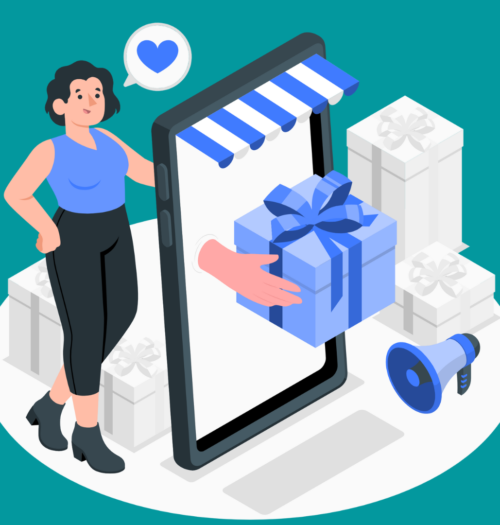Creating an effective lead funnel is essential for businesses looking to generate and nurture potential customers, and one of the most underrated tools for achieving this is the survey. Surveys offer a direct line to your audience, helping you gather valuable insights, qualify leads, and guide potential customers through each stage of the sales funnel. Whether you’re in B2B or B2C, surveys can be a powerful asset for improving engagement, understanding customer pain points, and driving conversions.
In this article, we’ll dive into how to create a lead funnel using surveys, covering everything from designing the survey itself to using the collected data to nurture and convert leads.
The Role of Surveys in Lead Funnels
Surveys play a dual role in a lead funnel:
- Collecting data: Surveys help you gather insights into your audience’s preferences, pain points, and readiness to buy.
- Qualifying leads: By using surveys strategically, you can identify which leads are worth prioritizing, based on their responses and where they are in the customer journey.
When done right, surveys not only generate leads but also allow you to tailor your marketing efforts based on real, actionable data. A well-constructed survey can serve as the foundation of your lead generation strategy.
Step 1: Define the Goal of Your Lead Funnel
Before creating your survey, it’s important to define what your lead funnel is trying to achieve. This could vary depending on your business goals and needs, but common goals include:
- Generating new leads from potential customers.
- Understanding your audience’s buying preferences or pain points.
- Qualifying leads by identifying which ones are ready to purchase versus those who need more nurturing.
By setting a clear objective for your survey funnel, you ensure that every question asked serves a purpose. Avoid the temptation to ask unnecessary questions that could overwhelm respondents. Instead, design your survey to focus on your ultimate goal, which might be gathering enough data to push respondents further down the funnel.
Step 2: Choose the Right Type of Survey for Each Funnel Stage
To create an effective lead funnel using surveys, it’s important to understand that not every survey will fit into every stage of the funnel. Each funnel stage requires a different approach, and your surveys should align with these stages to maximize effectiveness.
Here’s how to use surveys at each stage of the funnel:
Top of the Funnel (Awareness Stage)
At the top of the funnel, your goal is to attract potential leads and raise awareness of your brand or product. Surveys at this stage should focus on gathering broad information about your audience’s needs and preferences without being overly intrusive. You’re building an initial relationship, so keep it simple and engaging.
Example surveys for top-of-funnel:
- Interest-based surveys: Ask broad questions related to your product or industry, such as “What’s your biggest challenge in managing projects?”
- Polls and quizzes: These are fun, engaging ways to gather initial data on preferences and pain points.
Top-of-funnel surveys help you build a list of contacts who are interested in your product or service, laying the foundation for further engagement.
Middle of the Funnel (Consideration Stage)
In the middle of the funnel, potential customers are evaluating their options. This is where you can use surveys to qualify leads by assessing their level of interest, budget, and decision-making process.
Example surveys for mid-funnel:
- Lead qualification surveys: Ask more detailed questions about how serious they are about purchasing, such as “What’s your timeline for making a decision?” or “Which features are most important to you in a CRM system?”
- Customer satisfaction surveys: For repeat visitors or previous customers, you can gather insights into their experience with your product or service, guiding them toward a repeat purchase or upsell.
These surveys allow you to segment your audience based on where they are in the decision-making process, helping you focus on the leads most likely to convert.
Bottom of the Funnel (Decision Stage)
At the bottom of the funnel, leads are on the verge of making a purchase. Surveys at this stage should be designed to push them over the edge and help you gather feedback post-purchase to ensure satisfaction.
Example surveys for bottom-of-funnel:
- Purchase intent surveys: Ask specific questions to gauge whether they’re ready to buy now, such as “Are you ready to start a free trial?” or “Would you like a demo of our product?”
- Post-purchase surveys: After a purchase is made, use surveys to gather feedback on their buying experience. This not only helps improve your customer experience but also sets the stage for customer retention and upsell opportunities.
These surveys focus on closing the deal and ensuring the customer is satisfied, increasing the likelihood of repeat business and referrals.
Step 3: Design a Survey That Qualifies Leads
The key to creating an effective survey funnel is designing questions that help you qualify leads. Lead qualification is the process of determining which leads are most likely to convert into paying customers. By asking the right questions, you can segment your audience based on their readiness to buy, allowing you to prioritize high-quality leads.
Here’s how to design lead-qualifying questions:
- Use multiple-choice questions: These make it easy to gather and analyze responses quickly. For example, “How soon do you plan to purchase [product]?” with options like “Within 1 month,” “3-6 months,” and “Not sure yet.”
- Include ranking questions: Ask respondents to rank their priorities, such as features they value most in a product. This helps you understand what matters most to them.
- Gauge their pain points: Ask questions that explore their challenges and needs. For example, “What is your biggest challenge when managing your marketing campaigns?” This gives you insight into how your product or service can solve their problems.
By structuring your questions to uncover real buying intent, you’ll be able to focus your marketing efforts on the leads most likely to move forward in the funnel.
Step 4: Use Surveys to Nurture Leads
Once you’ve gathered leads from your surveys, it’s time to nurture them. Lead nurturing is the process of building relationships with potential customers and guiding them through the sales funnel, often using email marketing or personalized content.
Here’s how to use the insights from your surveys to nurture leads:
- Segment your audience: Based on survey responses, you can segment your leads into different groups. For example, leads ready to buy within a month can be sent product demos or free trials, while leads with a longer buying timeline can receive educational content to keep them engaged.
- Personalize your content: Use the data you’ve collected to create personalized marketing materials. If a lead expressed interest in a specific feature of your product, send them a case study or tutorial focused on that feature.
- Send follow-up surveys: As you nurture your leads, you can send follow-up surveys to gather additional insights, assess their changing needs, and continue to qualify them as they move through the funnel.
By nurturing leads based on their survey responses, you ensure that each potential customer receives relevant, targeted content that keeps them moving toward a purchase decision.
Step 5: Analyze the Data and Optimize Your Funnel
After collecting survey responses and nurturing your leads, it’s essential to analyze the data to optimize your lead funnel. This helps you refine your approach and ensure that your funnel is functioning as efficiently as possible.
Key metrics to analyze:
- Completion rate: How many people start and finish your survey? If you notice a high drop-off rate, consider revising the length or complexity of your questions.
- Response insights: Look at how your leads answered key qualification questions. Are you attracting high-quality leads, or do you need to adjust your targeting?
- Conversion rate: Track how many leads from your survey ultimately convert into paying customers. This will help you gauge the overall effectiveness of your survey funnel.
By analyzing the data, you can continually improve your survey design, lead qualification process, and nurturing strategies to drive better results.
Step 6: Follow Up with Post-Survey Engagement
The final step in creating a successful survey-based lead funnel is following up with your respondents. Regardless of where they fall in the funnel, following up ensures they stay engaged with your brand.
Ideas for follow-up:
- Personalized thank-you emails: After someone completes a survey, send them a personalized email thanking them for their time and offering them further information based on their responses.
- Exclusive offers or discounts: Reward survey participants with a special offer or discount to encourage them to take the next step in the funnel, such as signing up for a free trial or making a purchase.
- Content offers: Share relevant blog posts, case studies, or how-to guides based on the answers they provided in the survey.
Following up after a survey keeps your brand top-of-mind and gives potential customers a reason to engage further with your business.
Conclusion: Surveys as a Powerful Tool in Your Lead Funnel
Using surveys to create a lead funnel is an effective way to engage potential customers, gather valuable insights, and qualify leads for further nurturing. By tailoring your survey design to each stage of the funnel—awareness, consideration, and decision—you can guide your leads through the process with precision.
As you move forward with your lead funnel strategy, remember that the key to success is analyzing the data, optimizing your approach, and maintaining personalized follow-up. When done correctly, surveys not only generate leads but also improve conversion rates, making them an indispensable part of your marketing toolkit for 2025 and beyond.



